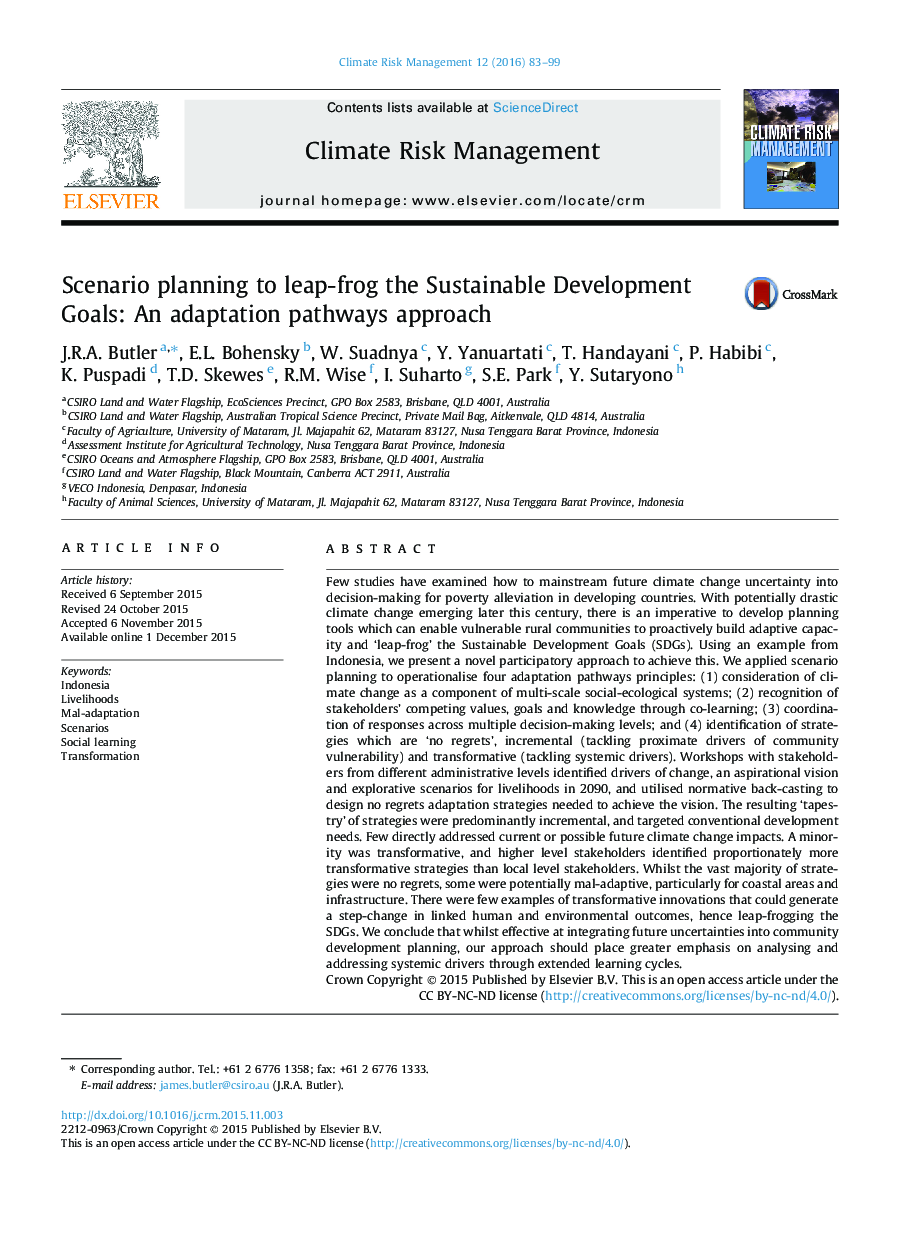| کد مقاله | کد نشریه | سال انتشار | مقاله انگلیسی | نسخه تمام متن |
|---|---|---|---|---|
| 1051197 | 1484880 | 2016 | 17 صفحه PDF | دانلود رایگان |
• Anticipatory adaptation must be mainstreamed into livelihood development planning.
• An integrated scenario planning and adaptation pathways approach is presented.
• Indonesian workshop participants identified no regrets strategies from back-casting.
• The majority was incremental and reflected standard development needs.
• Longer term learning processes are required to identify transformative strategies.
Few studies have examined how to mainstream future climate change uncertainty into decision-making for poverty alleviation in developing countries. With potentially drastic climate change emerging later this century, there is an imperative to develop planning tools which can enable vulnerable rural communities to proactively build adaptive capacity and ‘leap-frog’ the Sustainable Development Goals (SDGs). Using an example from Indonesia, we present a novel participatory approach to achieve this. We applied scenario planning to operationalise four adaptation pathways principles: (1) consideration of climate change as a component of multi-scale social-ecological systems; (2) recognition of stakeholders’ competing values, goals and knowledge through co-learning; (3) coordination of responses across multiple decision-making levels; and (4) identification of strategies which are ‘no regrets’, incremental (tackling proximate drivers of community vulnerability) and transformative (tackling systemic drivers). Workshops with stakeholders from different administrative levels identified drivers of change, an aspirational vision and explorative scenarios for livelihoods in 2090, and utilised normative back-casting to design no regrets adaptation strategies needed to achieve the vision. The resulting ‘tapestry’ of strategies were predominantly incremental, and targeted conventional development needs. Few directly addressed current or possible future climate change impacts. A minority was transformative, and higher level stakeholders identified proportionately more transformative strategies than local level stakeholders. Whilst the vast majority of strategies were no regrets, some were potentially mal-adaptive, particularly for coastal areas and infrastructure. There were few examples of transformative innovations that could generate a step-change in linked human and environmental outcomes, hence leap-frogging the SDGs. We conclude that whilst effective at integrating future uncertainties into community development planning, our approach should place greater emphasis on analysing and addressing systemic drivers through extended learning cycles.
Journal: Climate Risk Management - Volume 12, 2016, Pages 83–99
